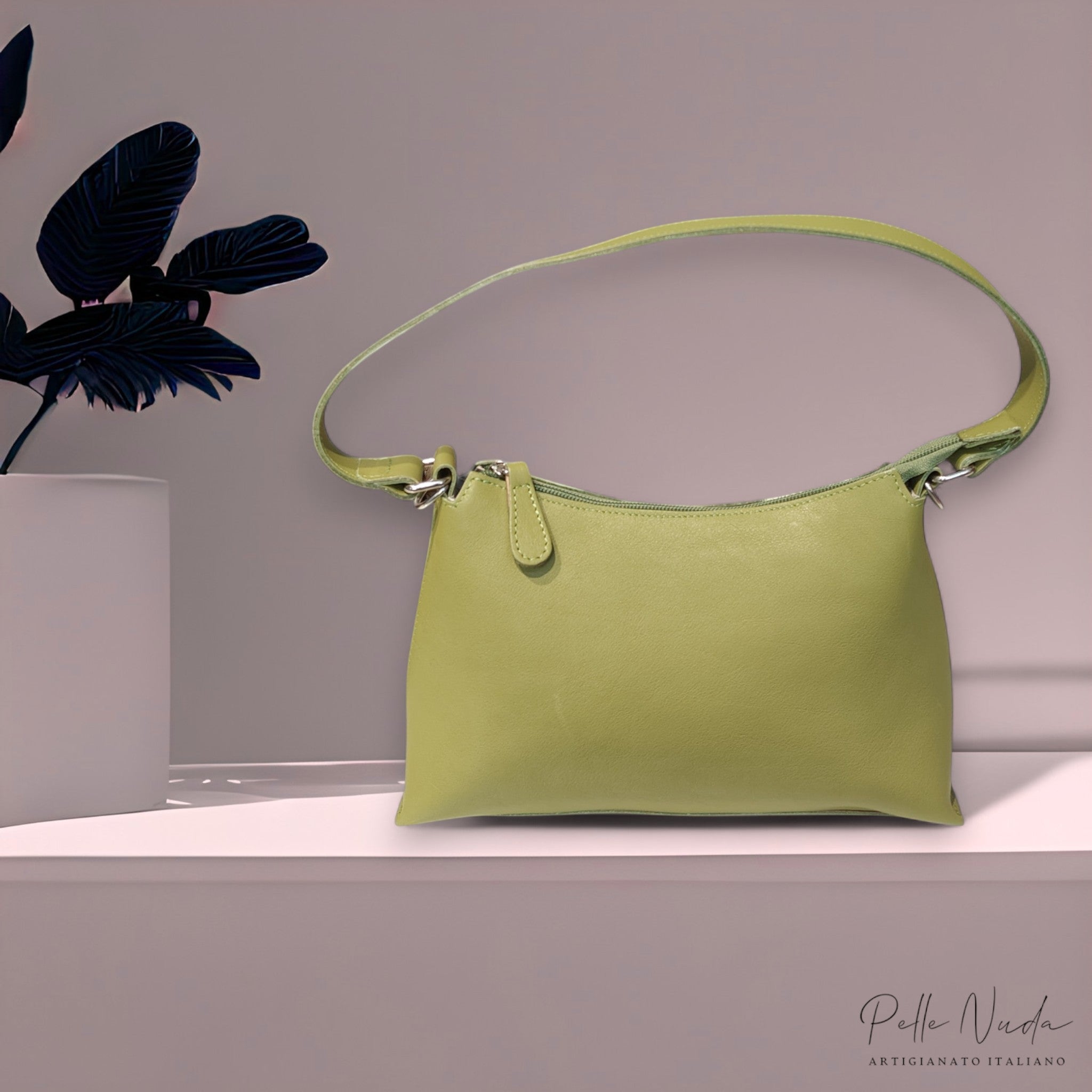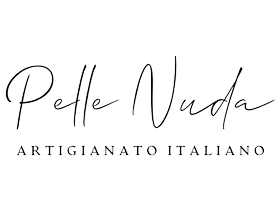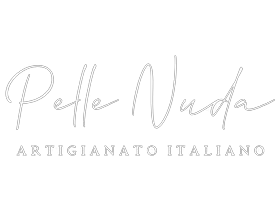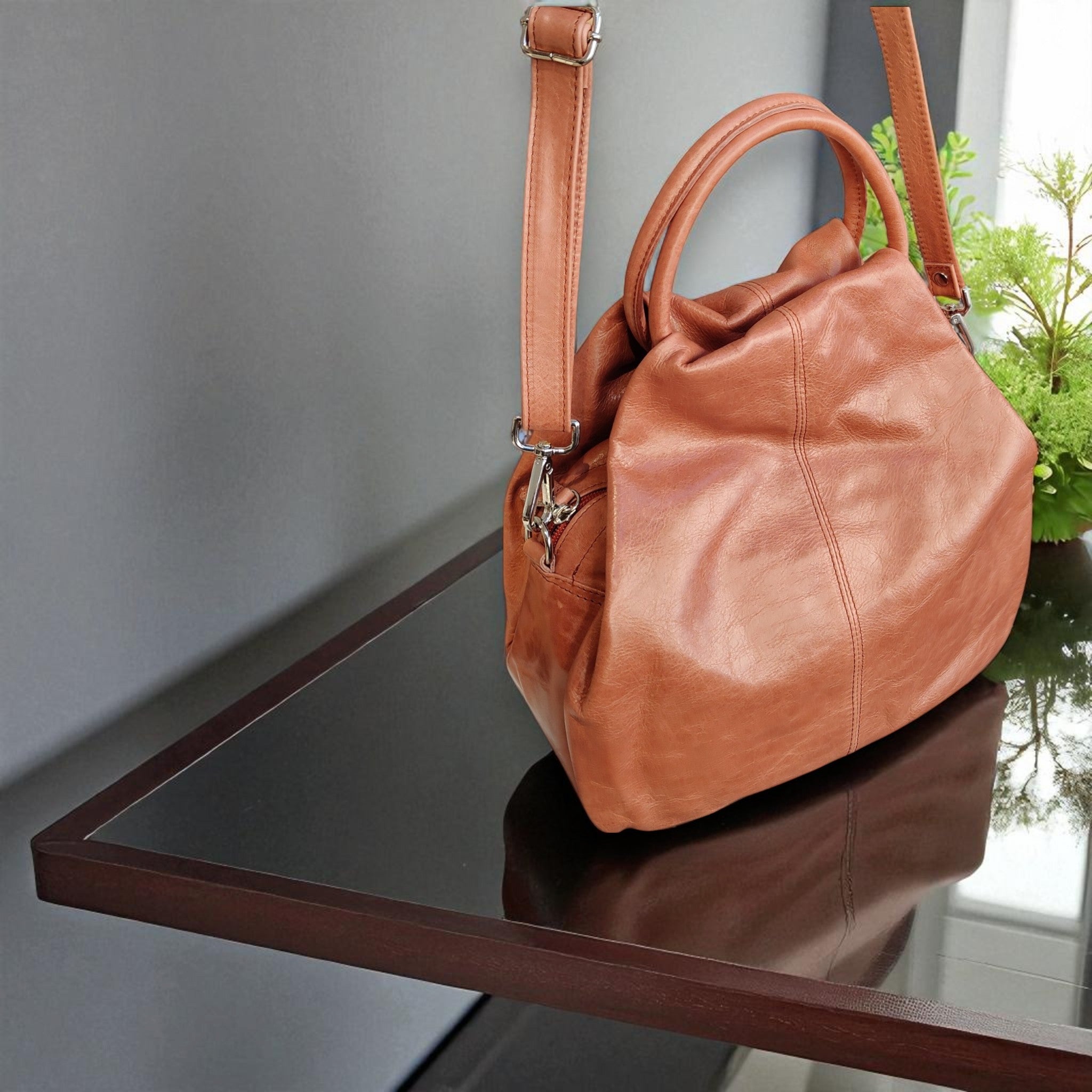
Leather Anatomy: A Complete Guide to Bag Leather Types - Part 2
Part II: Processing and Texture - The Art of Transforming Leather
An in-depth guide to the techniques that transform rawhide into leather masterpieces.
While we explored the animal origins of leather in the first part, we now delve into the heart of craftsmanship: the manufacturing process. Every hide, regardless of its origin, can be transformed through specific techniques that alter its appearance, texture, and functional properties. This second part of our guide will lead you through the world of manufacturing, where art meets science to create unique materials.
The Basics of Leathermaking: From Rawhide to Finished Product
The Tanning Process
Tanning is the first fundamental step in leather transformation. This chemical-physical process stabilizes the protein fibers, making the leather resistant to decay and giving it the desired characteristics.
Vegetable Tanning (With Tannin)
Vegetable tanning uses natural extracts from bark, leaves, and fruit. It's the oldest and most valuable technique:
- Characteristics : It gives the leather a natural colour that varies from beige to brown
- Properties : High resistance, ability to develop patina over time
- Time : Slow process that can take 30 to 60 days
- Uses : Ideal for structured bags, belts and accessories that benefit from aging
Mineral Tanning (Chrome)
Chrome tanning uses trivalent chromium salts, representing 90% of world production:
- Characteristics : Softer and more flexible leather than vegetable tanning
- Properties : Greater water resistance, more vivid colors
- Time : Quick process, can be completed in a few hours
- Uses : Perfect for soft bags, colorful accessories and fashion leather goods
Mixed Tanning
It combines the advantages of both techniques:
- Balance : It combines the nobility of vegetable tanning with the practicality of mineral tanning
- Versatility : Suitable for multiple applications
- Result : Skin with intermediate characteristics
Classic Textures: Tradition and Innovation
Smooth Leather
Smooth leather represents the purest and most natural form of the material:
Technical Features:
- Uniform surface without special treatments
- Preserves the natural grain of the animal
- High color absorption capacity
- Develops natural patina with use
Finishing Variants:
- Aniline : Transparent color that preserves the natural texture
- Semi-aniline : Light pigmentation that maintains softness
- Pigmented : Full coverage that evens out the surface
Ideal Applications:
- Formal business bags
- Classic accessories
- Products where naturalness is a priority
Hammered Leather
The hammered finish creates a distinctive texture through mechanical pressure:
Manufacturing Process:
- Application of controlled pressure on the surface
- Creating geometric or irregular patterns
- Possibility to vary the intensity and depth of the hammering
Functional Benefits:
- Increased scratch resistance
- Ability to hide small imperfections
- Non-slip texture
- Dynamic visual effect
Types of Hammered:
- Fine hammered : Delicate and regular texture
- Large hammered : Most evident and characteristic pattern
- Irregular hammered : Natural and casual effect
Saffiano Leather: Geometric Elegance
Saffiano is one of the most recognizable leathers in the world of luxury leather goods (we have already written an article on this particular leather):
History and Origins:
- Developed in 1913 by Mario Prada
- Characterized by a crosshatch texture
- Originally patented as "Saffiano Leather"
Production Process:
- Application of a special press with a geometric pattern
- Treatment with protective waxes and resins
- Finished with specific paints for durability
Distinctive Properties:
- Extreme resistance to scratches and stains
- Ease of cleaning and maintenance
- Recognizable and prestigious texture
- Exceptional durability over time
Modern Variants:
- Saffiano Classico : Traditional cross pattern
- Saffiano Soft : Softer and more flexible version
- Saffiano Varnish : With protective glossy finish
Advanced Surface Processing
Suede
Suede is obtained by working the flesh side of the skin:
Technical Features:
- Velvety surface obtained by abrasion
- Soft and pleasant to the touch texture
- High liquid absorption
- Sensitivity to stains
Manufacturing Process:
- Selection of young and soft skin
- Split to obtain the desired thickness
- Controlled surface abrasion
- Specific protective treatments
Specific Uses:
- Casual and informal bags
- Autumn and winter accessories
- Products where softness is essential
Nubuck Leather: Velvety Refinement
Nubuck represents the evolution of suede and is more expensive:
Differences from Suede:
- Processing the grain side instead of the flesh side
- Finer and more uniform texture
- Increased wear resistance
- More elegant and refined look
Production Process:
- Light sanding of the grain side
- Waterproofing treatments
- Specific colors for nubuck
Application Benefits:
- Superior suede resistance
- Luxurious texture
- Seasonal versatility
Distressed Leather (Vintage/Distressed)
The vintage finish gives the leather a worn look:
Aging Techniques:
- Manual Blending : Applying Gradient Colors
- Washing : Treatments that soften the texture
- Controlled abrasion : Creation of worn areas
- Chemical treatments : Acceleration of the patina process
Aesthetic Results:
- Naturally aged look
- Artistic chromatic variations
- Irregular and characteristic texture
- Uniqueness of each piece
Specialized Processing
Pull-Up Leather
Oily leather is characterized by a high content of oils and waxes:
Production Process:
- Deep impregnation with natural oils
- Application of protective waxes
- Processing that enhances the mobility of the oils
Unique Features:
- Pull-up effect: lightening when ironed
- Natural water resistance
- Self-healing ability of small scratches
- Noble and characteristic aging
Ideal Applications:
- Travel and heavy-duty bags
- Outdoor accessories
- Products that benefit from self-repair
Embossed Crocodile Leather
The crocodile print artificially recreates the texture of exotic skins:
Printing Techniques:
- Hot stamping : High temperature pressure
- Cold Press : Mechanical pressure without heat
- Combination printing : Union of both techniques
Commercial Benefits:
- Reduced cost compared to original exotic skins
- Constant and regular availability
- Variety of colors and sizes
- No regulatory restrictions
Quality of the Result:
- Realistic and convincing texture
- Durability comparable to original leather
- Professional finish
Metallic Leather
The metallic finish gives metallic reflections to the surface:
Application Process:
- Preparation of the base surface
- Application of specific primer
- Application of metal powders
- Fixing with protective paints
Achievable Effects:
- Gold : Classic and luxurious elegance
- Silver : Modernity and versatility
- Bronze : Warmth and originality
- Multicolor : Iridescent effects
Creative Uses:
- Evening and special occasion bags
- Fashionable and trendy accessories
- Products that require visual impact
Artistic and Decorative Works
Perforated Leather
Perforation creates decorative and functional patterns:
Drilling Techniques:
- Laser : Maximum precision and complex patterns
- Punching : Traditional method for geometric shapes
- Die cutting : Mass production with standardized shapes
Multiple Functions:
- Decoration: Attractive aesthetic patterns
- Ventilation: Increased breathability
- Lightness: Reduction of overall weight
- Originality: Light and shadow effects
Woven Leather
Weaving is one of the oldest and most artistic techniques:
Types of Weaving:
- Flat weave : Classic and regular
- Herringbone Weave : Diagonal Pattern
- Irregular weave : Natural and artistic effect
Manufacturing Process:
- Cutting strips of uniform width
- Preparation of the substrate
- Manual or mechanical weaving
- Fixing and finishing
Aesthetic Benefits:
- Three-dimensional texture
- Play of light and shadow
- Structural resistance
- High artisan value
Patchwork Leather
Patchwork combines different skins to create artistic compositions:
Composition Techniques:
- Geometric : Regular and symmetrical patterns
- Organic : Natural and fluid forms
- Mixed : Combination of both approaches
Technical Considerations:
- Compatibility of the leathers used
- Uniformity of thickness
- Joint strength
- Chromatic harmony
Protective and Functional Treatments
Waterproofing
Waterproofing treatments protect the leather from humidity:
Types of Treatment:
- Impregnation : Deep penetration into the pores
- Coating : Application of protective film
- Combined : Union of both techniques
Protection Levels:
- Water repellent : Splash resistant
- Waterproof : Complete water protection
- Breathable : Maintains air permeability
Anti-Stain Treatments
Stain protection is essential for everyday leather goods:
Applied Technologies:
- Nanotechnology : Molecular Coatings
- Fluoropolymers : Effective chemical barriers
- Natural Treatments : Eco-Friendly Solutions
Effectiveness on Different Types of Stains:
- Liquids : Wine, coffee, soft drinks
- Fats : Oils and oily substances
- Colorants : Inks and pigments
Antibacterial Treatments
Bacterial protection is increasingly in demand:
Active Ingredients:
- Silver ions : Long-lasting action
- Organic compounds : Immediate effectiveness
- Photocatalytic treatments : Activation with light
Quality Control and Certifications
International Standards
The processes must comply with precise quality standards:
Main Certifications:
- ISO 9001 : Quality Management System
- ISO 14001 : Environmental Management System
- REACH : European Chemicals Regulation
- OEKO-TEX : Standard for Textile Safety
Quality Testing
Each process must pass specific tests:
Physical Tests:
- Tensile strength
- Abrasion resistance
- Tear resistance
- Flexural strength
Chemical Tests:
- Lightfastness
- Sweat resistance
- Stain resistance
- Color stability
Process Controls
Continuous monitoring ensures consistent results:
Monitored Parameters:
- Working temperature
- Applied pressure
- Process time
- Relative humidity
Sustainability in Manufacturing
Eco-Friendly Technologies
The leather industry is evolving towards more sustainable processes:
Chrome-Free Tanning:
- Uses of vegetable tannins
- Innovative aldehyde processes
- Enzyme technologies
Natural Colorants:
- Plant pigments
- Mineral dyes
- Low-impact coloring techniques
Biodegradable Treatments:
- Compostable finishes
- Vegetable oils
- Natural waxes
Circular Economy
The valorization of waste becomes a priority:
Reuse of Materials:
- Recovery of trimmings
- Transforming waste into accessories
- Production of composite materials
Water Recycling:
- Advanced purification systems
- Reuse of process water
- Reduction of water consumption
Future Trends in Manufacturing
Emerging Technologies
Technological innovation is revolutionizing manufacturing processes:
3D Printing on Leather:
- Three-dimensional decorations
- Mass customization
- Rapid prototyping
Advanced Lasers:
- Nanometric precision
- Processes that are impossible with traditional methods
- Full automation
Artificial intelligence:
- Automated quality control
- Process optimization
- Defect Prediction
Mass Customization
Customization becomes accessible:
Enabling Technologies:
- On-demand production
- Digital configuration systems
- Flexible automation
Opportunities for Consumers:
- Choice of custom textures
- Unique combinations of processes
- Individual monograms and decorations
Considerations for Choosing the Process
Functional Factors
The choice of processing must consider the intended use:
Intensity of Use:
- Everyday use: Durable workmanship
- Occasional use: Priority to aesthetics
- Intensive use: Protective treatments
Environmental Conditions:
- Humidity: Waterproofing treatments
- Sun: UV protection
- Friction: Resistant machining
Aesthetic Factors
The visual and tactile aspect is crucial:
Desired Style:
- Classic: Traditional workmanship
- Modern: Innovative techniques
- Vintage: Aged effects
Favorite Texture:
- Smooth: Formal elegance
- Textured: Distinctive character
- Soft: Tactile comfort
Economic Considerations
The price-quality ratio varies significantly:
Processing Costs:
- Simple processes: Low cost
- Complex processes: Higher investment
- Advanced technologies: Premium pricing
Value over Time:
- Durable workmanship: Long-term investment
- Delicate finishes: More frequent maintenance
- Innovative technologies: Added value
Maintenance of the Different Processes
Smooth Skins
Regular Cleaning:
- Soft, dry cloth
- Specific products for smooth skin
- Avoid excess humidity
Nutrition:
- Periodic nourishing creams
- Specific oils for the type of tanning
- Frequency based on usage
Textured Leathers
Special Care:
- Soft bristle brushes
- Penetrating products
- Be careful of the texture cavities
Protection:
- Protective sprays
- Avoid buildup in texturing
- Periodic health check
Treated Leathers
Compliance with Treatments:
- Products compatible with treatments
- Avoid aggressive substances
- Maintenance of protective properties
Re-application:
- Periodic verification of effectiveness
- Retreatment when necessary
- Professionalism in application
Conclusions of the Second Part
Processing represents the creative soul of leather goods, transforming raw materials into functional works of art. Each technique, from the most traditional to the most innovative, opens up endless creative possibilities while always keeping quality and durability at the forefront.
Choosing the appropriate process requires a thorough understanding not only of the technical aspects, but also of the aesthetic and functional requirements of the final product. A master leatherworker knows that workmanship isn't just a matter of appearance; it determines the very character of the accessory, its longevity, and its behavior over time.
Technological evolution and a growing focus on sustainability are opening new frontiers in manufacturing, promising a future where tradition and innovation merge to create increasingly refined and environmentally friendly products.
In the third and final part of our guide, we'll explore the world of exotic and specialty leathers, where the exceptional quality of the material meets the art of craftsmanship to create unique and one-of-a-kind accessories.
At Pelle Nuda Milano: where Italian craftsmanship transforms every piece of leather into a masterpiece of beauty and functionality.




Leave a comment
This site is protected by hCaptcha and the hCaptcha Privacy Policy and Terms of Service apply.